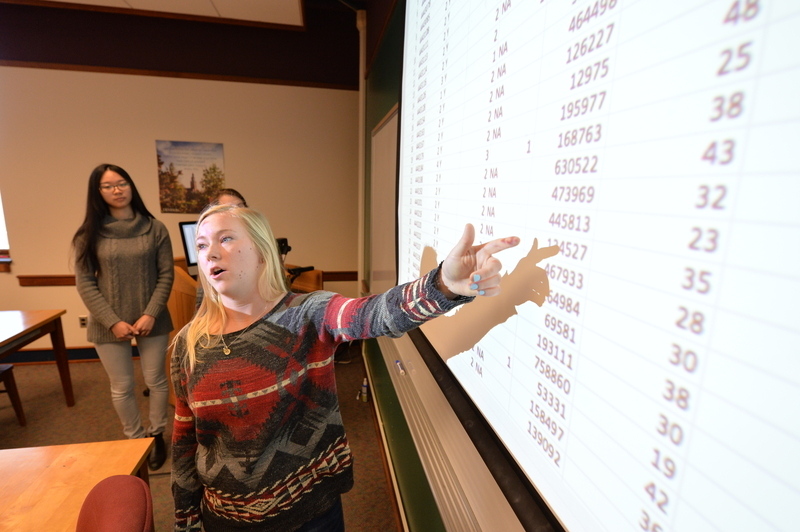Among the many public deficiencies exposed by Covid is the gap between the data available to us and our ability to recognize, analyze, understand and use it to tell stories and shape important decisions.
What has been striking to me over the last few months is how often we have failed to frame the right questions, collect the needed data and use it to guide policy and decision making. Too often our elected officials and the public at large have tended to either ignore the data or selectively use it to validate pre-existing views.
As a college president, it has further reinforced my perspective that our students will need data competency to be effective citizens in a complex world driven by wicked-problems and to successfully launch into careers.
The jobs that are likely to be available and desirable to our graduates will require data, especially quantitative competency. It doesn’t matter the job, the company or the industry — knowing how to properly frame questions, gather the right data, interpret it for key audiences, and then putting learnings into practice are crucial skills in today’s workplace.
Data science was named the fastest-growing career in the United States in 2017 by LinkedIn. According to Bureau of Labor Statistics data, 82 percent of American organizations have or plan to have positions that require data analytics skills, and 72 percent have hired for similar data-focused positions in the last 12 months. Nearly 60 percent of U.S. companies expect to increase their hiring of data analysis positions in the next five years.
Data Beyond the Major
The good news is that the number of colleges offering data science and analytics majors is on the rise. We launched a data analytics major at Denison University in 2017 with tremendous success. It quickly became one of the top five most popular degrees at the university.
My concern is that too many students can still graduate without any real quantitative skills or they graduate with one course that they “managed to get through.”
One approach is to weave quantitative data throughout a variety of courses across the college. For example: some faculty in the humanities, and other less traditional quantitative disciplines, have been working on ways to add quantitative approaches into courses.
At my university, we are doing some interesting work outside the classroom. For example: students in our RED Corps program (Research, Engagement and Design), are developing data skills while working to identify solutions to campus challenges. RED Corps has been a good way to engage a broader group of students in developing capacity in research methodology, question framing, data analysis and human-centered design.
Stepping Away from the Computer Processor
At the same time, I worry that nationally we have more students in quantitative data-driven academic majors who are not getting the broad-based exposure to the arts, humanities and social sciences that educates them to frame questions, contextualize results, and communicate effectively. They are also not getting the grounding in ethics needed to place boundaries around how and when we use data.
We had an object lesson in that a few years ago, when we hired a data analytics firm. The team was brilliant, and the work they did was very helpful, but there was a disconnect between their data expertise and their face-to-face interactions with faculty and staff members, and, most importantly, our board.
They showed up for a 15-minute presentation with a massive deck of indecipherable slides. The takeaway: high quality research has to be matched by clear and comprehensible storytelling that can help guide organizations, companies and clients in decision-making.
And that’s where many data science programs fall short. They need to use more high impact practices that give students experiences working in teams to analyze and present complex data-driven arguments to less data-competent audiences.
What Higher Education Can Do Better
Higher education has a huge role to play in getting us from where we are to where we need to be—and it is a heavy lift. It’s not so much that we need to change the courses our faculty are teaching as much as we need to alter the pathways that we create for our students to graduate.
We need to take students wide across the curriculum, ensuring that they develop a range of attributes, from creativity, ethics and intuition to analytical, quantitative and logic skills. Our engineers need more humanities courses, and our humanities majors need quantitative literacy.
We also need to find more places in the curriculum where students have opportunities to weave together different disciplinary perspectives to frame questions, collect and analyze data, and tell data-driven stories.
This is a shortcoming that must be addressed for the challenging times in which we live. With some smaller changes to our courses and some larger changes to the roadmaps and pathways we give students, we can educate and graduate more data-competent citizens and professionals.
We are going to need them.





